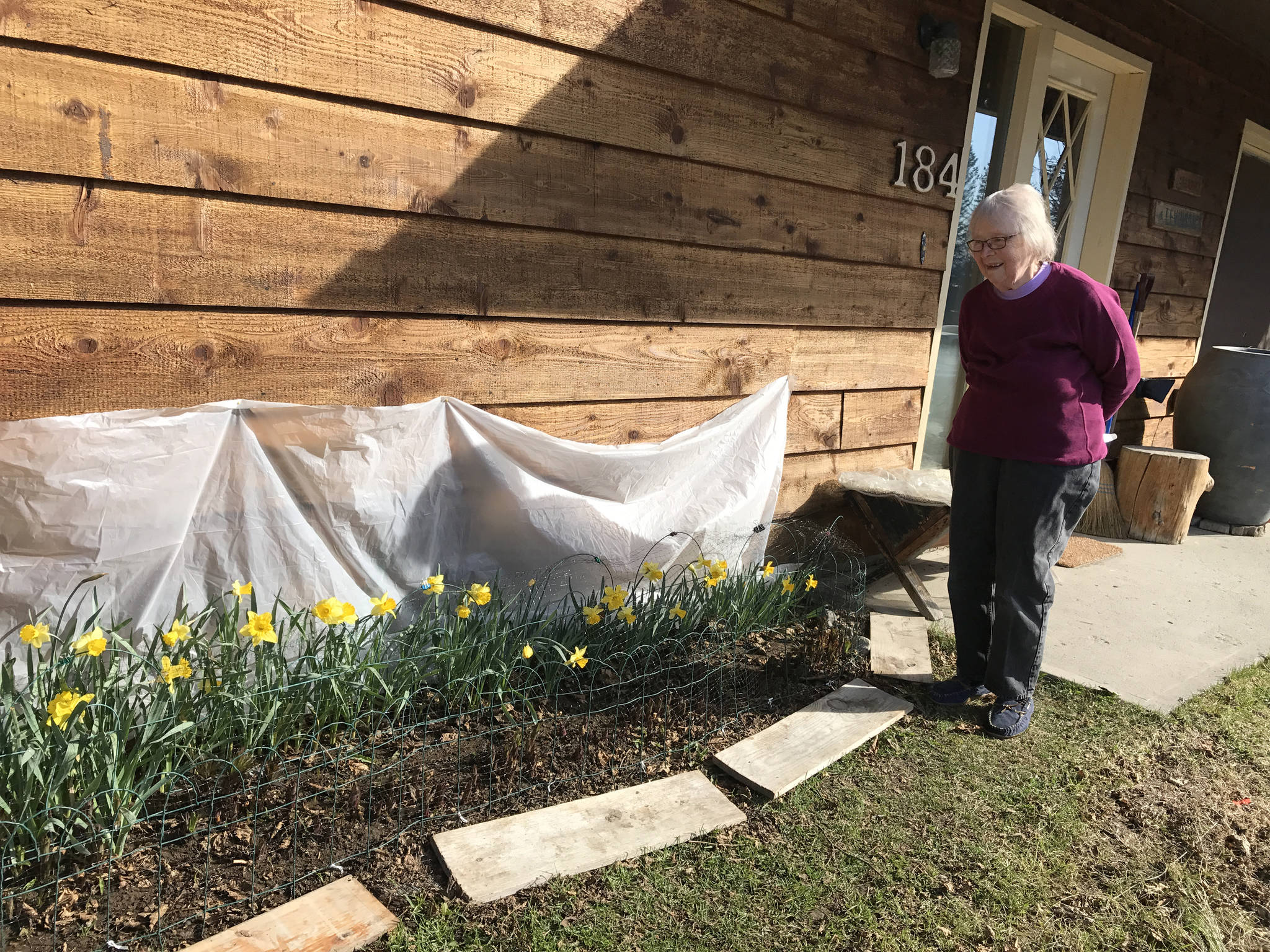While fulfilling my civic obligation of jury duty this month I met some lovely people and was reminded that I am losing touch with those of you who live at the higher elevations. There is nothing like being in a large (or small, depending on the stage of the process) room with a couple of dozen bored adults who have been waiting an hour and a half for the ball to get rolling. Might as well strike up a conversation about gardening.
One of my fellow jurors is a successful market gardener and while I was positing the potential of garlic/leeks/shallots/artichokes/kale as potential cash crops she reminded me that her arable land is under two feet of snow. Oops.
We can’t ALL move to a lower elevation (or Indiana), although I bless the day we did. Of the many character building experiences that I had while living at Mile 15 East End Road is an appreciation for how fast the garden caught up to those planted at the lower elevations. Really and truly. It may not seem likely what with the later start date, but vegetables seem to know that they need to get the show on the road — unlike our judicial system. Patience is the key quality that a gardener needs no matter the locale but especially so for those faced with seemingly endless winter.
That said I’m tapping my foot. Spring is not moving fast enough. Last year was so very special, and I am savvy enough to know that it was not the norm. However, I am looking for signs of life that are not yet there. No fat buds on shrubs, no shoots emerging from the delphiniums, barely signs of life from the peonies. Yes, the bulbs are peaking out, one tiny crocus bloom. Patience.
The ground is too wet to get out there and clean up the perennial beds, and its too cold to expose some of the more tender plants that I attempt to find success with. Case in point are the “Foxy” foxgloves. Foxgloves are biennials (they last two years, blooming the second year) but “Foxy” blooms the first year from seed, lovely, and really come into their own the second year.
The catch here is that they may not survive the winter. So I threw some Christmas tree branches over them with hopes of offering protection from weather vagaries. Now, with the freeze/thaw cycle firmly in place, the need for protection is crucial. My answer is to throw floating row cover over them, anchor it with pins, and wish them well. As much as I dislike looking at the row cover, I don’t want to rush things, better to have blooming foxgloves then none at all.
Now is an excellent time to cut out last years canes in your raspberry patch. You can easily spot them — they are light tan, have peeling bark and have spent fruiting lateral canes. Cut these down to the crown or as close as you can get. Next cut out the weak canes, the spindly one and even the ones that are roaming out of the bed and threatening to take over your entire garden plot. Raspberries are aggressive to say the least. I have yet to find a satisfactory method to hold them up. Toward the end of last season, during the berry harvest, the canes were bent over and dragging on the ground making access difficult. I would very much like to avoid that scenario this year. Once the canes are cut, remove them, don’t leave them laying on the ground. I did that one year and the slugs found a haven in their midst. Keep everything tidy, it pays off in the end.
Although rugosa roses are supposedly carefree they do need some tending. I will be cutting down the “Hansa” patch and allowing it to regenerate. It may not bloom as profusely as in years past but the fact is that it hasn’t been all that great the last three years anyway, a sure sign that action needs to be taken. I’m looking forward to seeing the results.
The area outside of the fence is fair game to moose and I know it. The initial intention was to not cage anything, it is either inside the protection of the fence or left to its own defenses. Well, the thought of clematis clamoring over the garden gate was too strong for me resist.
And much to strong for the moose to resist. The resident cow took a huge bite out of the middle of the c.alpina perfectly severing it three feet from the ground, but didn’t touch the c. tangutica (both are planted side by side, nice effect). I’m hoping the alpina will appreciate the pruning.
If you have (and I sincerely hope so) red twig dogwoods and have yet to prune them give it a go. Cut the old, colorless canes down to the ground. You will be rewarded by vibrant red new growth. Not pruning fades the color and you are left with a nondescript shrub. Pruning is like magic.
The same goes for any of your shrubs: roses, mock orange, spirea. Now is a good time to assess any winter damage and/or old canes and remove them. Do this now while the plants are still dormant. With spring taking its sweet time to get the show on the road, somewhat like our judicial system, you have time to take action. Be patient.
Rosemary Fitzpatrick is a longtime Homer gardener. She has been writing Kachemak Gardener since 1990.


